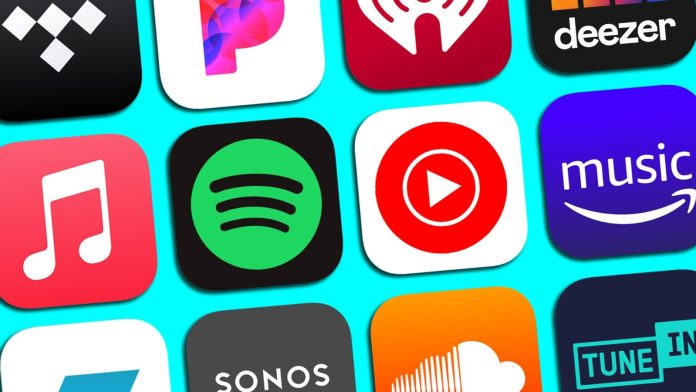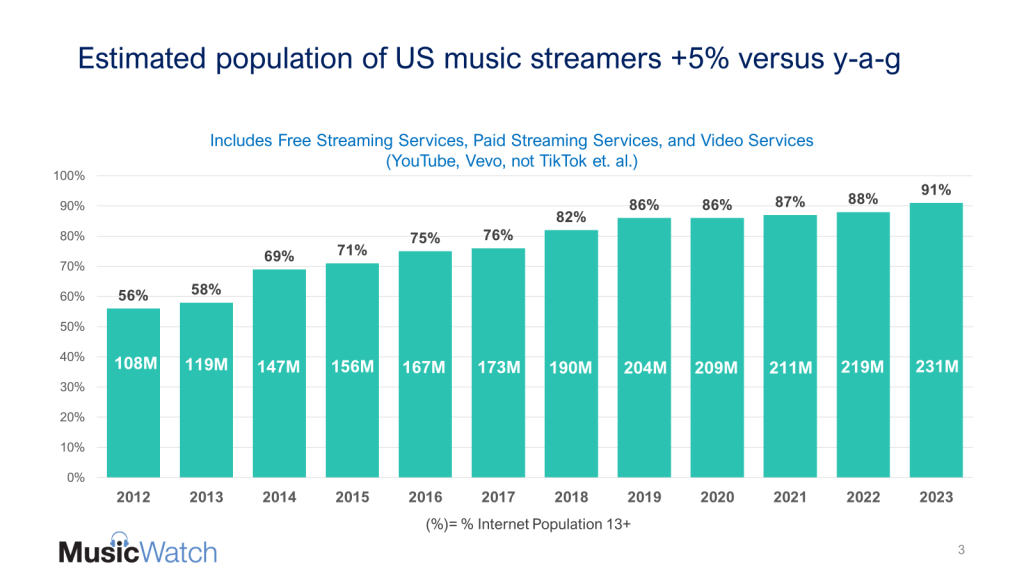
A dozen years have flown by since Spotify first graced the U.S. with its presence, marking a significant shift in how Americans consume music. Fast forward to today, and it’s clear that streaming music has woven itself into the fabric of our daily lives. According to the latest insights from the 22nd edition of MusicWatch’s U.S. Annual Music Study, a staggering 91% of the U.S. internet population engaged with a music streaming service in the last year. This data heralds a new era where over half of U.S. internet users aged 13 and over—amounting to 109 million individuals—now subscribe to music streaming services such as Spotify, Apple Music, and Amazon Music Unlimited.
The Changing Landscape of Music Streaming
The journey from the early days of internet music streaming to its current state reveals a fascinating evolution in user behavior and technology. Initially, streaming was a novelty, enjoyed by a modest 56% of Americans. This figure surged to 69% in 2014 and breezed past 80% by 2018. The year 2023 marks a milestone, with music streamers surpassing 90% of the internet population for the first time. This growth is not just about numbers; it’s about how and why we listen. MusicWatch counts various forms of streaming, from ad-supported platforms like Spotify and Pandora to video services like YouTube, excluding short-form video platforms such as TikTok and Instagram Reels.

The Role of the Internet and Devices
The expansion of the U.S. internet population from approximately 125 million in 2012 to 193 million in 2023 underscores the explosion in music streaming adoption. This isn’t just about more people being online; it’s about how they access the internet. The shift from dial-up to high-speed home internet, coupled with the advent of mobile internet, has been instrumental. Moreover, the reasons behind subscription payments have evolved. Early adopters were drawn to features like playlists and social network connectivity. Nowadays, as Russ Crupnick of MusicWatch points out, the convenience of seamless listening across various devices and settings has become the primary motivator.
The Financial Tune of Music Streaming
As music streaming services have become an integral part of our lives, they’ve also seen a notable increase in per-capita spending on recorded music, which went up by 7% from 2022. This uptick is attributed to organic growth and price inflation, with services like Apple Music, Spotify, YouTube Music, and Amazon Music implementing price hikes. These adjustments reflect the value users find in these services, ensuring access to their favorite tunes anytime, anywhere.
Music streaming has undoubtedly changed the landscape of music consumption in the U.S., becoming a ubiquitous part of daily life. As technology and user preferences continue to evolve, the harmony between accessibility and enjoyment promises to keep the melody of music streaming alive and well for years to come.
[H/T] – Billboard





